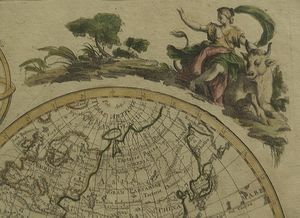Library:Finding and Using Data for your Research
Find Data
This is a guide to finding some of the best data sources that UBC can provide access to. For guidance on how to cite research data check out the Library Guide to Citing Data.
| Click here to see the newest datasets that have been added to Abacus, the library's data catalogue. |
Data sources in this guide are categorized by the general topic and type of data. Use the topic tabs above to view lists of sources.
Before using a data source in your research, you will need to check if there are any use restrictions. While data itself cannot be copyrighted, any product derived from that data can. This can apply to datasets as a whole, as well as charts and graphs created by online tools. There may also be privacy concerns related to the data itself, which would limit the ways the data can be used and shared. Users should always read the terms and conditions for each data source, especially if they intend to publish their research. Researchers should also cite the source of their data. If you have any questions about copyright, contact the UBC Copyright Office.
Data or Statistics?
Statistics are the interpretation and summary of data. If you are looking for a quick number to demonstrate “how much” or “how many” you may want a statistic. Statistics are typically presented in tables or charts, and they reflect someone’s interpretation of raw data.
Data are raw information from which statistics are derived. If you want to get the whole picture in order to develop your own interpretation of something, you may want data. Raw data is a primary source and generally results from surveys and other research methods. Data are usually available in machine-readable formats for use with software programs like Microsoft Excel, SPSS, SAS, or Stata.
In many databases and research guides, data and statistics are grouped together under a single title or heading.

Economic
Canadian
Abacus
- Research data sets from around the world, collected by the library.
- Data sets of interest include the Labour Force Survey, IMF microdata, Canadian Business Patterns, Trade Data excel files, Small Area trade files.
Bank of Canada
- Data provided by the Bank of Canada includes Exchange rates, interest rates, price indexes, and other indicators.
- Data is generally available for the past 10 years, with more historical data available for certain measures.
BC Stats
- Provides free access to current reports and statistics from British Columbia's central statistical agency: Census of Canada and aboriginal population tables, regional statistics and maps, exports and imports, business, industry and environmental statistics, and lots more British Columbia social and economic data, as well as articles in certain journals.
- The Statistics by Subject tab allows users to find data sources on a variety of topics. Some topics provide machine-readable tabular data, while others will only provide reports with human-readable tables accompanied by analysis. Users can also try looking for BC data through the appropriate ministry, or through BC's open data portal, DataBC.

Cansim
- Database from Statistics Canada containing more than 52 million numeric time series covering a wide variety of social and economic indicators.
DataBC
- Open data portal from the BC government. Provides access to datasets across sectors, including data about the Economy, Education, Finance, Health, Justice, Natural Resources, Service, Social Services, and Transportation.
- Search the catalogue with keywords, and filter your results by filetype as well as by the sector or Ministry.
Trade Data Online
- Generate customized reports on Canada and U.S. trade in goods with over 200 countries. The database allows users to generate reports down to the province and territory level. No information on "Trade in services" is available on this database.
TSX-CFMRC
- Use for researching historical stock prices and other corporate financial data for Toronto Stock Exchange-listed companies.
- Data includes: Opening price, Opening Bid, Opening Ask, Closing Price, Closing Bid, Closing Ask, High, Low, Return, Transactions, Volume, Outstanding Shares, Quote Changes, and TSE/TSX Index Data.
- Data can be graphed or saved as a .lst file that can be opened in Excel.
| Many of the international sources include Canadian data. |
International

Abacus
- Research data sets from around the world, collected by the library.
- Data sets of interest include: IMF data, International Trade Merchandise, Cross National Time Series, ICPSR (primarily historical) (ask about this - how is it different from searching ICPSR itself. Same with IMF.
China Data Online
- Monthly and yearly reports on China's macroeconomic development, statistical databases on China's population and economy at the county and city level, and financial indicators of industries.
- Managed by the University of Michigan China Data Center. Information is not provided about the data sources or instruments used to collect the data.
Datastream
- International economic, company and financial data. Data are available in both text and graphical formats. Data can be selected for analysis, display and print. Updated daily.
- Only available on certain library workstations. See the link for more information.
Eurostat
- A coordinated statistical agency for all countries in the Eurozone. Collects economic, environmental and population data.
- Data can be accessed through the online Statistics Database from the home page.
- Methodology can be found in the Metadata menu on the left hand side in this section. Specific methodological information for individual datasets can be accessed along with the datasets themselves.
IMF Data
- Annual, monthly, and quarterly financial and economic time series cover more than 200 countries and 40 regional and special groups of countries.
- Use for the following topics: Balance of payments, Banking and Financial systems, Employment, Exchange rates, Fund position, Finance, Government finance, Interest rates, International liquidity and Banking, National accounts, Population, Prices, Production, and Trade.
- Select predefined data reports by Country, Topic and Data Source, or build your own queries across or within datasets.
- Export results or manipulate and visualize the data with the online tool provided.
National Sample Survey of India (CD-ROM)
- Statistics collected continuously by India's National Sample Survey Office on social, economic, demographic, industrial and agricultural topics.
- Data sets held by the library are current to 2009. The datasets have been individually catalogued online, with good information about what the data sets contain and how the data was collected, but most of the data sets themselves cannot be accessed this way.
OECDstat via OECD iLibrary
- Select the Statistics tab from the OECD iLibrary site, then select OECD.Stat under the Databases column. One the next page, select the Data icon, which will lead you to the datasets.
- OECD iLibrary provides online access to all books, journals, statistical series and databases originating from the Organisation for Economic Co-operation and Development since 1998. UBC has access to the International Energy Agency's IEA Databases and to OECD.Stat.
- OECD publications cover economic and social issues including trade, education, labour, social policy, health, finance, development, energy, environment, and science and innovation.
Penn World Tables
- The PWT are a prepared data set (based on information from the International Comparison Program run by the World Bank, combined with National Accounts data) that can be downloaded in its entirety and is useful for comparing long-term cross-country growth. A major focus of this data set is calculating real GDP using purchasing power parities to correct for differences in prices across countries. The dataset covers 189 countries, and the data in many cases ranges from 1950 to 2010.
Proquest Statistical Insight
- An important resource for locating government statistics - US government statistical publications, as well as those of international intergovernmental organizations such as the UN, European Union, OECD, IMF, Asian Development Bank, etc. Includes online tables for US federal agencies and for the World Bank, and links to government statistical resources on the Web.
SimplyMap
- Internet-based mapping application that enables users to develop interactive thematic maps and reports using demographic, business, and marketing data.
Thomson One
- Company and industry analysis from over 500 investment analysis firms. Coverage is global.
- Use Internet Explorer browser and ensure pop-ups are enabled.
Trade Analyser
- Detailed trade data from two sources: World Trade (1988-2005, annual data) continues Statistics Canada's World Trade Database CD-ROM. Canadian Imports and Canadian Exports (1988-present, monthly and annual data) continues Statistics Canada's TIERS (Trade Information Enquiry Retrieval System) CD-ROM.
UN Comtrade
- The United Nations Commodity Trade Statistics Database (UN Comtrade) provides detailed trade statistics reported to the UN Statistics Division from 170 countries: imports, exports, trading partners, and commodities from 1962-present.
- Explanatory notes and information about the data sources are found under the Metadata & References tab.
UNdata
- Covers all countries and areas, drawing selectively on statistics from throughout the UN system to bring them together in a common platform using global statistical standards. Selective summary tables cover agriculture, population, industry, national accounts, energy, health, human development, trade, refugees, education, employment, and information and communication technology.
- Tables are taken from databases and sources published in the extended United Nations system, including the ILO'S Yearbook of Labour Statistics and Key Indicators of the Labour Market; the World Bank's World Development Indicators; the IMF's International Financial Statistics; the WHO's World Health Statistics Annual; various UNICEF and UNESCO publications; the Demographic Yearbook, Energy Statistics Yearbook, National Accounts Statistics: Main Aggregates and Detailed Tables, and many more.
- Use keywords to search for datasets in the main search box. To browse datasets, select the Databases tab. Each database provides a list of the datasets it contains, which can be viewed individually. When viewing datasets, they can be manipulated within the portal (e.g., to examine a single country) or the dataset can be downloaded to in order to work with it in your preferred software.
- UNdata is compiled from a variety of sources including national statistics agencies, so the survey instrument may be different for each country's data. Source information for each dataset can be found near the bottom of the page when viewing the dataset.
U.S. Federal Reserve
- The U.S Federal Reserve provides downloadable data about a variety of economic indicators.
USA.gov Data and Statistics
- Data and statistics organized by topic, including Government, Business and Economic, Family and Community, Environment, and more.
World Advertising Research Centre (WARC)
- Advertising expenditure by medium in 80 markets, plus forecasts and media costs for key countries.
World Bank Data
- Statistical data for over 550 development indicators and time series data from 1960 for over 200 countries and 18 country groups in World Development Indicators, Global Development Finance, Africa Development Indicators, and other databases. Data includes social, economic, financial, natural resources, and environmental indicators.
- Users can browse by country, topic, indicator. Datasets can be downloaded or else viewed and manipulated in the online visualization and analysis tool at databank.worldbank.org
WRDS (Wharton Research Data Services)
- Data from CRSP and COMPUSTAT, covering over 30,000 companies.
- Includes security prices and trading volume, income and balance sheet items, and analyst projections for earnings and sales. WRDS also contains stock market indices, bond prices and interest rates, mutual fund and stock ownership information, options data, and a wide array of macroeconomic time series.
- International data, marketing and industry reports, and web usage data are also available on WRDS.
Historical

Canada Year Book Historical Collection
- Covers the first century of Canada's history, from 1867 to 1967, with historical text, tables, charts and maps
- The 1867 to 1886 editions were written only in English; French editions are included 1887-1967.
- Text and tables cover population, industry and the economy, trade, immigration, labour, transportation, agriculture, communications, and government.
Proquest U.S. Serial Set Digital Collection (Congressional Publications)
- The U.S. Serial Set, a collection of U.S. Government publications compiled under the directive of Congress, captures every aspect of American life from the early 19th century onward: farming, westward expansion, scientific exploration, politics, international relations, business, and manufacturing. It includes Congressional reports and documents as well as executive agency and departmental reports ordered to be printed by Congress.
Sessional Papers of Canada
also available in Microform
- Sessional Papers are reports tabled in the House of Commons and published as a set of volumes for each parliamentary session. These and other topics are represented by text and statistical tables such as: annual reports of departments, estimates and public accounts, early census reports, and reports of royal commissions.
- Before the Dominion Bureau of Statistics was established in 1918, the annual reports of government departments such as Agriculture, Indian Affairs, and Railways and Canals were the main source of statistics on Canadian economic and social activity. The public accounts and annual reports of departments are particularly good sources for detailed historical statistics.

Related Research Guides
Finance & Investment Research Guide
International Business Research Guide
Industry & Market Research Guide
GIS

Abacus
- Research data sets from around the world, collected by the library.
- Datasets of interest include census tables and geography, base map data, and transportation network data, among others.
DataBC
- Open data portal from the BC government. Provides access to datasets across sectors, including data about the Economy, Education, Finance, Health, Justice, Natural Resources, Service, Social Services, and Transportation.
- Search the catalogue with keywords, and filter your results by filetype as well as by the sector or Ministry.
GeoGratis
- Freely available maps, data and publications from Natural Resources Canada
SimplyMap
- Web-based mapping application that enables users to develop interactive maps and reports using demographic, business, and marketing data.
- Canada/US only
Vancouver Open Data Catalogue
- Open data portal for the City of Vancouver. Many of the datasets are geographic in nature.
Related Research Guides
Climatological/Hydrological Data Sources Some of these data sources may not be in GIS formats.

Health
A more comprehensive guide to Health data can be found here: Health Statistics & Data Research Guide
Here are a few links to get you started:
Abacus
- Abacus holds the Library's collection of research data sets from around the world.
- Data sets of interest include: CIHI Discharge Abstracts Database, Canadian Community Health Surveys, Canadian Tobacco Use Monitoring Survey, Health Indicators Database.
BC Community health atlas
- Health stats mapping interface for BC. Data can also be exported as a CSV file.
Health in Canada
- The main health portal of Statistics Canada.
- Scroll to the bottom to find data by topic or community, or view reports and time series data.
Gapminder
- International health and development data.
- An interactive tool lets you visualize the data on the site or download the data.
Additional sources:
Canadian Institute for Health Information
- Free, publicly available statistics on Canadian health care and the health care system, drawn from a variety of sources.
DataBC
- Open data portal from the BC government. Provides access to datasets across sectors, including the Economy, Education, Finance, Health, Justice, Natural Resources, Service, Social Services, and Transportation.
- Search the catalogue with keywords, and filter your results by filetype as well as by the sector or Ministry.
Eurostat
- A coordinated statistical agency for all countries in the Eurozone. Collects economic, environmental and population data.
- Access data through the online Statistics Database on the home page.
- Browse individual data files can be downloaded by selecting the Statistics tab in the top menu bar and browsing the files. *Methodology can be found in the Metadata menu on the left hand side in this section. Specific methodological information for individual datasets can be accessed along with the datasets themselves.
OECDstat via OECD iLibrary
- Select the Statistics tab from the OECD iLibrary site, then select OECD.Stat under the Databases column. On the next page, select the Data icon, which will lead you to the datasets.
- OECD iLibrary provides online access to all books, journals, statistical series and databases originating from the Organisation for Economic Co-operation and Development since 1998. UBC has access to the International Energy Agency's IEA Databases and to OECD.Stat.
- OECD publications cover economic and social issues including trade, education, labour, social policy, health, finance, development, energy, environment, and science and innovation.
UN Data
- Covers all countries and areas, drawing selectively on statistics from throughout the UN system to bring them together in a common platform and interface using global statistical standards. Selective summary tables cover agriculture, population, industry, national accounts, energy, health, human development, trade, refugees, education, employment, and information and communication technology.
- Tables are taken from databases and sources published in the extended United Nations system, including the ILO'S Yearbook of Labour Statistics and Key Indicators of the Labour Market; the World Bank's World Development Indicators; the IMF's International Financial Statistics; the WHO's World Health Statistics Annual; various UNICEF and UNESCO publications; the Demographic Yearbook, Energy Statistics Yearbook, National Accounts Statistics: Main Aggregates and Detailed Tables, and many more.
- Use keywords to search for datasets in the main search box. To browse datasets, select the Databases tab. Each database provides a list of the datasets it contains, which can be viewed individually. When viewing datasets, they can be manipulated within the portal (eg. to examine a single country) or the dataset can be downloaded to in order to work with it in your preferred software.
- UN data is compiled from a variety of sources including national statistics agencies, so the survey instrument may be different for each country's data. Source information for each dataset can be found near the bottom of the page when viewing the dataset.
WorldBank Data
- Statistical data for over 550 development indicators and time series data from 1960 for over 200 countries and 18 country groups in World Development Indicators, Global Development Finance, Africa Development Indicators, and other databases. Data includes social, economic, financial, natural resources, and environmental indicators.
- Browse by country, topic, indicator. Datasets can be downloaded or else viewed and manipulated in the online visualization and analysis tool at databank.worldbank.org
World Health Organization (WHO)
- Data from the UN health agency.
Social
Canadian

Abacus
- Research data sets from around the world, collected by the library.
- Census of Canada Public Use Microdata Files (PUMFs), Dissemination Area/Enumeration Area tables, Postal Code conversion files, General Social Surveys, Election Surveys, Survey of Household Spending standard tables, Canadian Institute for Public Opinion, Angus Reid polls.
BC Stats
- Current reports and statistics from British Columbia's central statistical agency, including Census of Canada and aboriginal population tables, regional statistics and maps, exports and imports, business, industry and environmental statistics, and lots more British Columbia social and economic data, as well as articles in certain journals.
- The Statistics by Subject tab allows users to find data sources on a variety of topics. Some topics provide machine-readable tabular data, while others will only provide reports with human-readable tables accompanied by analysis. Users can also try looking for BC data through the appropriate ministry, or through BC's open data portal, DataBC.
Cansim
- Database from Statistics Canada containing more than 52 million numeric time series covering a wide variety of social and economic indicators.
Canadian Census Analyser
- Census profiles for multiple levels of geography as far back as 1961, online analysis of public use microdata files 1971-present, and postal code conversion files 1996-present.
- Hosted by the University of Toronto, Canadian Census Analyser covers the following geographical levels: Canada, provinces and territories, federal electoral districts, census divisions, census subdivisions, census tracts, and enumeration areas / dissemination areas.

DataBC
- Open data portal from the BC government. Provides access to datasets across sectors, including data about the Economy, Education, Finance, Health, Justice, Natural Resources, Service, Social Services, and Transportation.
- Search the catalogue with keywords, and filter your results by filetype as well as by the sector or Ministry.
| Many of the international sources include Canadian data. |
International
Abacus
- Research data sets from around the world, collected by the library.
- Data sets of interest include: US Census, National Opinion Research Center General Social Survey (NORC-GSS), ICPSR surveys, World Values Surveys, Gallup polls, Voice of the People surveys, Latin American Public Opinion Project (LAPOP), Latinobarometro.

American Community Survey
- An ongoing survey conducted by the U.S. Census Bureau, sampling a small percentage of the U.S. population every year. Its focus is on social topics and includes a fairly in depth look at housing situations, while basic demographic and some economic factors are also evaluated.
- Information on methodology can be found under the Data & Documentation tab.
Census of India
- 2001 only - need to check this.
China Data Online
- Monthly and yearly reports on China's macroeconomic development, statistical databases on China's population and economy at the county and city level, and financial indicators of industries.
- Managed by the University of Michigan China Data Center. Information is not provided about the data sources or instruments used to collect the data.
Eurostat
- A coordinated statistical agency for all countries in the Eurozone. Collects economic, environmental and population data.
- Data can be accessed through the online Statistics Database from the home page. Individual data files can be downloaded by selecting the Statistics tab in the top menu bar and browsing the files. Information about the methodology can be found in the Metadata menu on the left hand side in this section. Specific methodological information for individual datasets can be accessed along with them.
ICPSR
- The Inter-university Consortium for Political and Social Research (ICPSR), part of the Institute for Social Research at the University of Michigan, has served social scientists around the world for decades by providing a central repository and dissemination service for machine-readable social science data. The Archive receives, processes, and distributes data on social phenomena occurring in over 130 countries and currently has holdings in excess of 500,000 machine-readable files representing over 7,500 research studies.

IMF Data
- Annual, monthly, and quarterly financial and economic time series cover more than 200 countries and 40 regional and special groups of countries.
- Use for: finding data on the following topics: Balance of payments, Banking and Financial systems, Employment, Exchange rates, Fund position, Finance, Government finance, Interest rates, International liquidity and Banking, National accounts, Population, Prices, Production, and Trade.
- Users can select predefined data reports by Country, Topic and Data Source, or can build their own queries across or within datasets. Results can then be exported or manipulated and visualized within the online tool. Monthly training webinars are available, information can be found here.
Latinobarometro
- Latinobarómetro is an annual public opinion survey that involves some 19,000 interviews in 18 Latin American countries, representing more than 400 million inhabitants.
- The Databank tab gives you access to a downloadable file for each year of the survey (older ones are free, most recent ones must be purchased). Some of these are also available through Abacus, so check there or with the library before purchasing. This page also gives information about licensing and use. The Documents tab contains links to methodological information, including the codebook.
National Sample Survey of India (CD-ROM)
- India's National Sample Survey Office (NSSO) continuously collects social, economic, demographic, industrial and agricultural statistics through sample surveys on countrywide basis.
- Data sets held by the library are current to 2009. The datasets have been individually catalogued online, with good information about what the data sets contain and how the data was collected, but the data sets themselves generally cannot be accessed this way.

OECDstat via OECD iLibrary
- Select the Statistics tab from the OECD iLibrary site, then select OECD.Stat under the Databases column. One the next page, select the Data icon, which will lead you to the datasets.
- OECD iLibrary provides online access to all books, journals, statistical series and databases originating from the Organisation for Economic Co-operation and Development since 1998. UBC has access to the International Energy Agency's IEA Databases and to OECD.Stat.
- OECD publications cover economic and social issues including trade, education, labour, social policy, health, finance, development, energy, environment, and science and innovation.
Polling the Nations
- A comprehensive collection of public opinion, with information from the United States and more than 90 other countries around the world, covering Europe, Canada, Mexico, Africa, and Asia. The database includes the full text of questions and responses covering a broad range of issues. Polling the Nations has collected more than 500,000 questions from Gallup, Harris and Roper as well as more than 700 other organizations.
- There are 5,000 topics in the Polling the Nations database, covering issues such as gun control, abortion, government, women, race relations, the economy, and children. In addition to these recurring themes, episodic events such as the Clinton impeachment, the 2000 vote count in Florida, and the September 11 attacks are added in a timely fashion.
Proquest Statistical Insight
- An important resource for locating government statistics - US government statistical publications, as well as those of international intergovernmental organizations such as the UN, European Union, OECD, IMF, Asian Development Bank, etc. Includes online tables for US federal agencies and for the World Bank, and links to government statistical resources on the Web.
Roper Center for Public Opinion Research
- Founded in 1947, the Roper Center for Public Opinion Research is the leading educational facility in the field of public opinion. It holds the most complete collection of public opinion information in existence, from the United States and international sources.
- Special features include iPOLL, a database organized at the question-level providing the tools to sift through nearly a half million questions asked on national [U.S.] public opinion surveys since 1935.
- RoperExpress is a data access tool introduced in October, 2005, for on-demand download of data. Faculty and students at member institutions now have unlimited access to those datasets in the Roper Center collection that are in ASCII or SPSS portable formats.
SimplyMap
- Internet-based mapping application that enables users to develop interactive thematic maps and reports using demographic, business, and marketing data.

UN Data
- Covers all countries and areas, drawing selectively on statistics from throughout the UN system to bring them together in a common platform and interface using global statistical standards. Selective summary tables cover agriculture, population, industry, national accounts, energy, health, human development, trade, refugees, education, employment, and information and communication technology.
- Tables are taken from databases and sources published in the extended United Nations system, including the ILO'S Yearbook of Labour Statistics and Key Indicators of the Labour Market; the World Bank's World Development Indicators; the IMF's International Financial Statistics; the WHO's World Health Statistics Annual; various UNICEF and UNESCO publications; the Demographic Yearbook, Energy Statistics Yearbook, National Accounts Statistics: Main Aggregates and Detailed Tables, and many more.
- Use keywords to search for datasets in the main search box. To browse datasets, select the Databases tab. Each database provides a list of the datasets it contains, which can be viewed individually. When viewing datasets, they can be manipulated within the portal (eg. to examine a single country) or the dataset can be downloaded to in order to work with it in your preferred software.
- UN data is compiled from a variety of sources including national statistics agencies, so the survey instrument may be different for each country's data. Source information for each dataset can be found near the bottom of the page when viewing the dataset.
USA.gov Data and Statistics
- Data and statistics organized by topic, including Government, Business and Economic, Family and Community, Environment, and more.
WorldBank Data
- Statistical data for over 550 development indicators and time series data from 1960 for over 200 countries and 18 country groups in World Development Indicators, Global Development Finance, Africa Development Indicators, and other databases. Data includes social, economic, financial, natural resources, and environmental indicators.
- Users can browse by country, topic, indicator. Datasets can be downloaded or else viewed and manipulated in the online visualization and analysis tool at databank.worldbank.org
World Values Survey
- The WVS is the largest non-commercial, cross-national, time series investigation of human beliefs and values ever executed.
- It consists of nationally representative surveys conducted in almost 100 countries, covering data from 1981 to 2014.
Historical

Canada Year Book Historical Collection
- Covers the first century of Canada's history (1867-1967), with historical text, tables, charts and maps, supplemented by interconnected learning resources for students and teachers. The 1867 to 1886 editions were written only in English; French editions are included 1887-1967.
- Text and tables cover population, industry and the economy, trade, immigration, labour, transportation, agriculture, communications, and government.
Early Censuses of Canada
- Electronic reproduction of an 1876 publication which includes 343 tables from 98 Censuses taken between 1665 and 1871.
- Includes data on the social and economic conditions in Canada from the earliest settlements to 1871, including Atlantic Canada, New France, Lower Canada, Upper Canada, Western Canada.
- All tables require Beyond 20/20.
House of Commons Parliamentary Papers (U.K.)
- The House of Commons Parliamentary Papers (HCPP) are the most detailed primary sources covering the past two centuries for Britain, its colonies and the wider world. They are the working documents of government for all areas of social, political, economic and foreign policy, showing how issues were explored and legislation was formed.
- HCPP now includes over 200,000 House of Commons sessional papers from 1715 to the present, with supplementary material back to 1688. HCPP delivers page images and searchable full text for each paper, along with detailed indexing.
Proquest U.S. Serial Set Digital Collection (Congressional Publications)
- Captures every aspect of American life from the early 19th century onward: farming, westward expansion, scientific exploration, politics, international relations, business, and manufacturing.
- This is a collection of U.S. Government publications compiled under the directive of Congress. It includes Congressional reports and documents as well as executive agency and departmental reports ordered to be printed by Congress.
Sessional Papers of Canada - also available in Microform
- Sessional Papers are reports tabled in the House of Commons and published as a set of volumes for each parliamentary session. These and other topics are represented by text and statistical tables such as: annual reports of departments, estimates and public accounts, early census reports, and reports of royal commissions.
- Before the Dominion Bureau of Statistics was established in 1918, the annual reports of government departments such as Agriculture, Indian Affairs, and Railways and Canals were the main source of statistics on Canadian economic and social activity. The public accounts and annual reports of departments are particularly good sources for detailed historical statistics.
Historical Statistics of the United States
- The standard source for statistical indicators of American history, from Colonial times to the present.
- Topics range from migration and health to crime, Colonial statistics and the Confederate States of America. The fully searchable and downloadable electronic edition permits users to graph individual tables and create customized tables and spreadsheets reflecting their own particular areas of interest.
Related Research Guides
Census of Canada Research Guide Includes information about accessing historical census info.
Aboriginal Statistics Research Guide
Crime and Justice Statistics Research Guide
Educational Statistics Research Guide
Help
If you need additional help accessing data resources, contact Paul Lesack at Koerner Library.
Data/GIS lab
Find out more about the Data/GIS lab and the facilities and services available there.
Software
SPSS workshops and consultation services are provided by the Research Commons.
Statistical Methodology
Help with statistical methodology is provided by the Department of Statistics' Statistical Consulting and Research Laboratory (SCARL).
Data Management
If you are collecting your own research data, find out more about Data Management.
Data/GIS Library Handouts
Below are a list of helpful library handouts:
1. Getting Started with Searching Abacus for Geospatial Data
2. Getting Started Finding Survey Data and Using Online Analysis Tools
3. Getting Started with the BC Economic Atlas
4. Getting Started with GeoSearch
5. Getting Started with CANSIM
8. Quick Start Exercises – PWT, UNdata, OECD.stat, IMF Data & World Bank Data
Note: Normally CSDs = cities